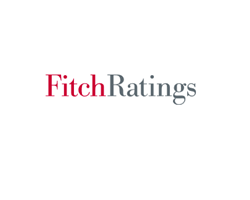Fitch Ratings Updates Global Metals & Mining Price Assumptions

December 6, 2022 - Fitch Ratings-London-06 December 2022: Fitch Ratings’ updated metals and mining price assumptions include revised thermal coal prices for 2022 and 2023, reflecting year-to-date prices, supply normalisation in 2023 and higher prices in China. We have raised our 2022 nickel price assumption, reflecting a market rally. We have kept all other price assumptions unchanged.
Our unchanged copper assumptions reflect softer market sentiment linked to the global economic slowdown in 2023, offset by supportive short- and medium-term supply-demand drivers. We expect a moderate increase in global primary copper consumption of about 2% in 2023, similar to 2022. Mine supply will grow by around 4% in 2023, although disruptions may affect that. A tightly balanced market and minimal global copper stocks (less than two weeks’ consumption) will sustain prices in 2023. Copper’s longer-term prospects are supported by demand from the energy transition.
We have maintained our iron ore assumptions as global steel demand continues to temper. However, the market is not oversupplied as lower iron ore supplies from Ukraine and Russia offset demand destruction in Europe and other regions.
Our metallurgical coal assumptions are also unchanged. Prices in 2022 were supported by met coal use in power generation due to the European energy crisis and increased thermal coal and gas prices. However, we expect met coal prices to reduce next year on weaker demand from steelmaking and more stable energy markets. Other factors that could affect the market include a potential removal of the Chinese ban on coal imports from Australia.
We have kept our aluminium price assumptions unchanged. CRU forecasts global aluminium inventories at 50 days in the coming years, indicating an equilibrium for the market. The aluminium market is still exposed to short-term fluctuations, with prices dipping below USD2,400/tonne since September. Financial investors have been cutting long positions due to rising interest rates increasing cost of carry, contributing to lower prices. Once quarter-on-quarter demand bottoms out in 2023 and industrial activity picks up, prices will gradually recover and incentivise restarts of smelters. Fundamental drivers, including marginal smelter costs will provide some support to prices.
Our zinc assumptions remain unchanged. Smelter and refining bottlenecks that kept the market tight in 2022 will continue in 2023, despite growing mine supply. Concentrates surpluses will remain until 2024, when new Chinese smelting capacity comes on stream, alleviating refined metal scarcity. Stimulus-driven growth in China will increase zinc demand by 3.1% in 2023, from a 3% drop in 2022, according to CRU. Ex-China demand will grow 2.2% in 2023 but this expansion could be jeopardized by steel-mill closures in Europe and inflation-eroded demand in the US.
Gold prices remain well above long-term historical averages, despite declining in 2022. We expect gold prices to continue normalising as the interest-rate increase cycle continues, assuming geopolitical risks abate.
Our marginally increased 2022-2023 prices for the Chinese thermal coal benchmark reflect higher year-to-date prices and greater reliance on coal power generation in the country in the near term due to droughts and lower hydropower generation, and the impact on supply from Covid-related restrictions and tighter mining safety requirements.
We have revised down our assumptions for the Newcastle thermal coal benchmark in 2022-2023 as warm weather in Europe, a key consumption region, has calmed energy markets. We expect overall demand for seaborne thermal coal to remain largely stable and Australian supply to normalise in 2023, moderating prices, particularly after the cyclone season in Australia.
Our increased nickel price assumption for 2022 reflects a price rally in a rather illiquid and volatile market, although our fundamental views on supply and demand remain unchanged.









.gif)

















